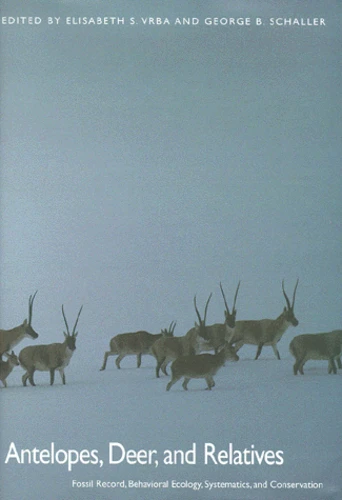Antelopes,Deer, And Relatives
Par : ,Formats :
- Paiement en ligne :
- Livraison à domicile ou en point Mondial Relay indisponible
- Retrait Click and Collect en magasin gratuit
- Réservation en ligne avec paiement en magasin :
- Indisponible pour réserver et payer en magasin
- Nombre de pages341
- PrésentationRelié
- Poids0.82 kg
- Dimensions18,3 cm × 26,1 cm × 2,7 cm
- ISBN0-300-08142-1
- EAN9780300081428
- Date de parution07/07/2000
- ÉditeurYale University Press
Résumé
From the era of early cave paintings to the present time, ruminants-deer, antelopes, cattle, buffalo, goats, giraffes, and their relatives-have captured the human on every continent except Australia and Antarctica, they have been more important to human subsistence than any other mammalian group. This biology relationships, and conservation of this fascinating and ecologically significant group of mammals.
Eminent authorities from around the world have contributed to this book on ruminants, integrating information from paleontology, molecular and population genetics, anatomy morphology and field studies of behavior, ecology, and the effects of climate change. Also covered are the genetics, morphology and behavior of the saola (one of several new species recently found in the Annamite Mountains between Laos and Vietnam) and other survivors from isolated and ancient branches on the ruminant family tree. Many of the living species are endangered, say the authors, and knowledge of their history evolution, and basic biology is critical to their conservation.
From the era of early cave paintings to the present time, ruminants-deer, antelopes, cattle, buffalo, goats, giraffes, and their relatives-have captured the human on every continent except Australia and Antarctica, they have been more important to human subsistence than any other mammalian group. This biology relationships, and conservation of this fascinating and ecologically significant group of mammals.
Eminent authorities from around the world have contributed to this book on ruminants, integrating information from paleontology, molecular and population genetics, anatomy morphology and field studies of behavior, ecology, and the effects of climate change. Also covered are the genetics, morphology and behavior of the saola (one of several new species recently found in the Annamite Mountains between Laos and Vietnam) and other survivors from isolated and ancient branches on the ruminant family tree. Many of the living species are endangered, say the authors, and knowledge of their history evolution, and basic biology is critical to their conservation.

